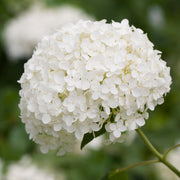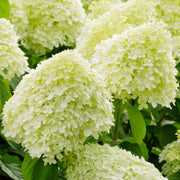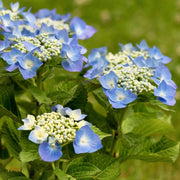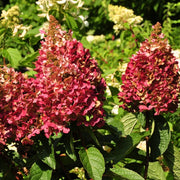Product description
Hydrangea macrophylla Lady in Red is a deciduous shrub that bears dark green foliage and subtle, red veining. The leaves are joined by pinkish-white flowers in early Summer that eventually take on a gorgeous, rose pink colour throughout the season. Its long flowering period of late June - September brings great value to pots, containers and planters for a sustained spell. It will also make a noticeable impact in your garden over time, with an ultimate height and spread of 1.2m once it fully matures.
Lacecap Hydrangeas have a hardy and compact structure, meaning very little effort is required to maintain them. As long as they are exposed to full sun, planted in moist, well-drained soil (alkaline pH recommended to ensure the best colour), and watered regularly, this plant will thrive. Despite their hardiness, macrophylla shrubs may require protection during the Winter season.
Please Note: When purchasing plants please consider that each live item is unique and may therefore differ from the images shown, which are for illustration purposes only.
Garden Plant Size Guide

Plants in larger pots can be multiple years older than their smaller counterparts with more mature root systems and foliage. This makes them able to thrive as a full size plant in your garden quicker than smaller alternatives.
The most common size of pot that garden plants come in are 9cm/1L/3L/5L this is in reference to the diameter at the top of the pot.
9cm potted plants still remain the most popular cost effective option though, they just may take a little patience to allow them to grow into full maturity once planted in your garden.
Plant specs, care guide & tips
Key features
Specifications
When to plant
| Jan | Feb | Mar | Apr | May | Jun | Jul | Aug | Sep | Oct | Nov | Dec |
|---|---|---|---|---|---|---|---|---|---|---|---|
Planting and period of interest times are general guidelines and may vary based on your location and conditions. For best results, consult local gardening resources.
Instructions
Top Tip
Protect hydrangeas in winter by adding a thick layer of mulch around the base to insulate the roots. In colder climates, cover the plant with burlap or a frost blanket to shield it from freezing temperatures and harsh winds.
How to Water
Water hydrangeas deeply, keeping the soil consistently moist, especially during dry periods. Avoid overhead watering to prevent fungal issues. Water at the base early in the morning or late in the evening, and mulch to help retain moisture.
How to Plant
Choose a spot with morning sun and afternoon shade, and well-draining, moist soil. Dig a hole twice as wide and just as deep as the root ball. Place the plant, backfill with soil, firm gently, and water well. Mulch around the base to retain moisture.




























